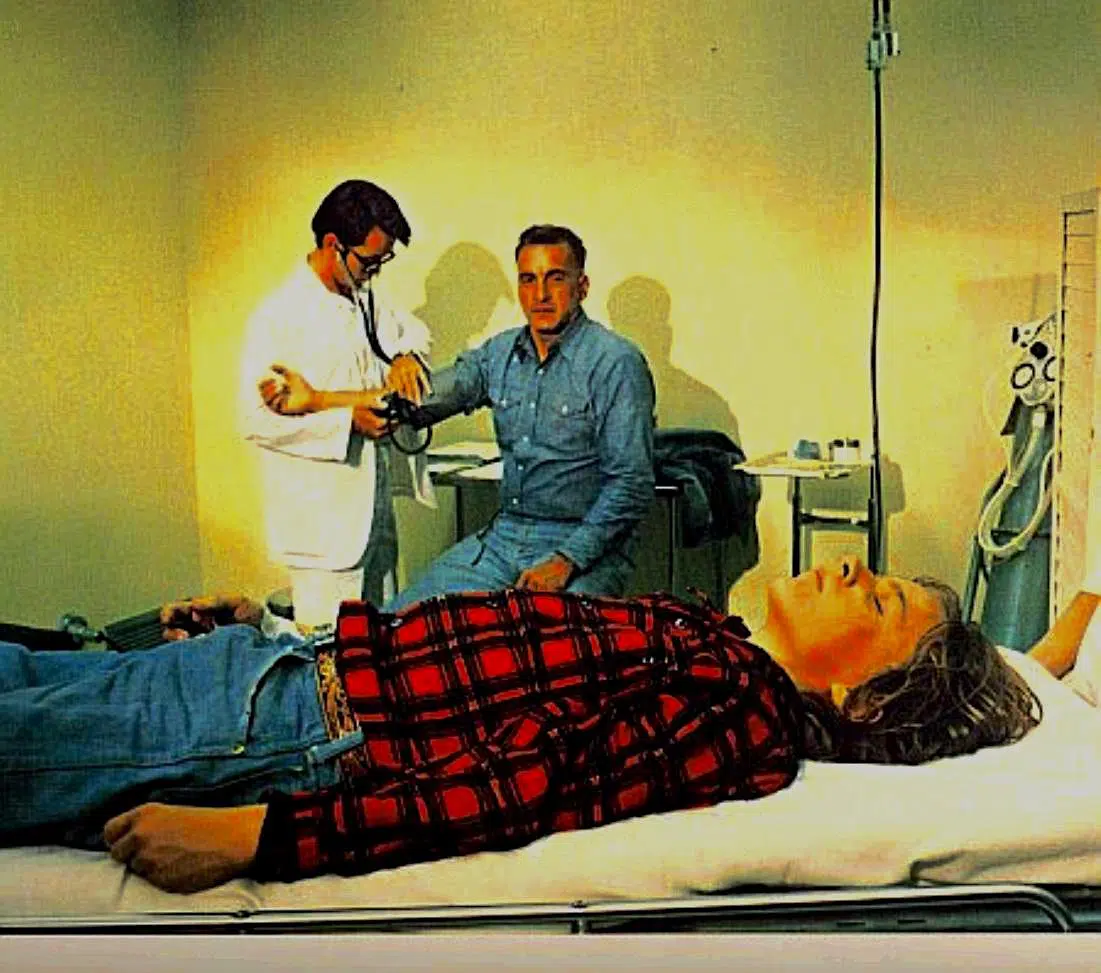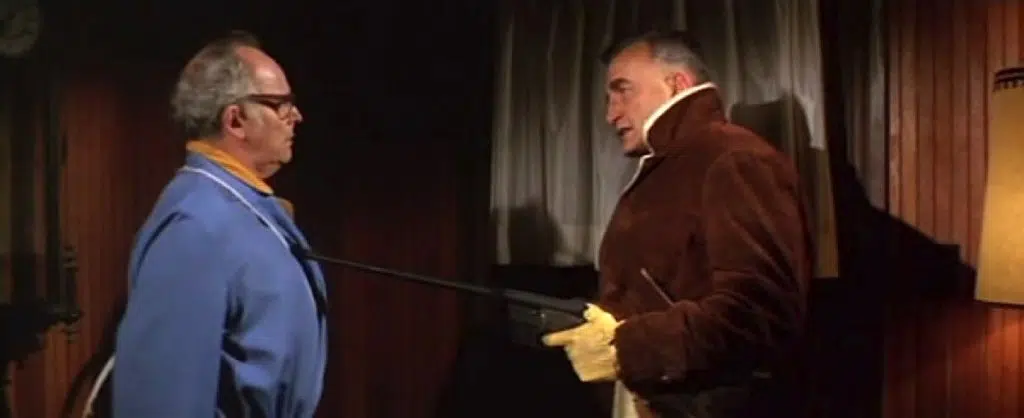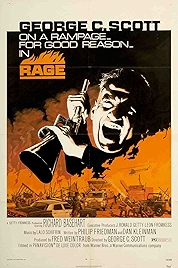George C Scott, as well as acting, also directed three films. Rage, the second, was the first to get a theatrical release and is an interesting failure, unlike Scott’s first film, The Andersonville Trial, which was a critical hit. Scott’s last, The Savage Is Loose, tickled neither audiences nor critics – it was probably the theme of incest.
The fascinating thing about Rage is that it’s a conspiracy thriller with a plot that’s all about the US government conspiring against its own people. This was 1972, pre-Watergate, when mainstream US-set conspiracy thrillers generally still hinged either on malevolent foreigners hatching dastardly plots (The Manchurian Candidate) or rogue generals planning a coup (Seven Days in May).
It’s based on a true incident, when the military in 1968 accidentally sprayed a chunk of Utah with the nerve agent VX, killing between 3,000 and 5,000 sheep, and then covered it up (for 30 years, as it happens). VX is still with us, by the way. It is the nerve agent that killed Kim Jong-nam, the troublesome half-brother of Korean leader Kim Jong-un, in Kuala Lumpur airport in 2017.
Here, VX has been renamed MX3 and Utah has become Wyoming, but large numbers of sheep have been subjected to an accidental aerial spraying. And so also have a kindly dad (Scott) and his son (Nicolas Beauvy), who were out in the great outdoors spending quality time together on a camping trip. The sheep are dead or dying, and the son, who had disastrously chosen to sleep out under the stars, is struggling to breathe.
Distraught, Dan (Scott) takes Chris to the hospital, where the family doctor Roy Caldwell (Richard Basehart) is all concern, and a new young doctor (Martin Sheen) takes control. What Dan doesn’t know is that Dr Holliford (Sheen) is actually an army major, and that in a cabal on a nearby military base, a cover-up has been organised of which Holliford is an integral part. Soon Dr Spencer (Barnard Hughes) from the Public Health Service will also arrive and start helping Holliford to keep the medical staff playing along with the subterfuge. Dan doesn’t know how sick his son is, nor that he’s sick himself, and will most probably die.
Philip Friedman and Dan Kleinman’s screenplay decides against being the sort of thriller in which the audience discovers what happened – we know the facts of what’s going on very early on. Instead it’s a thriller about Dan finding out, and what happens when he does. Perhaps banking on the idea that the audience will side with a sick man with a dying son no matter what he does, they send Dan off on a vigilante vengeance jag, and in the process lose all the sympathy Scott’s performance as the increasingly vexed father has generated.
Dan kills innocent people. At the facility where the drug company brewed the fatal nerve agent, he blows up the lab, killing the innocent animals in the test lab.
Ay ay ay, what a mis-step. Reviewers of the time mostly blame Scott as the director for what is basically a problem with the plot. A case of auteur theory gone mad. In fact Scott’s direction is pretty good, nimble, pacey, a bit TV-movie-ish for sure, but he’s good at generating tension and paranoia early on, and draws a clear visual distinction between cold officialdom (the hospital, the army base) and warm everyday humanity (the campsite, a diner Dan later escapes to).
Lalo Schifrin’s score helps with the tension, even after the film has shot its bolt – the pizzicato strings and discords really adding a frisson.
It’s a change of gear for Scott, at the time probably best known for playing army guys. He was Patton in the movie of the same name, and Buck Turgidson in Dr Strangelove. Here he’s the anti-army guy, still granitelike, as Scott was, but humane and his performance is a reminder of how good he is. But then this is a great cast all round. Look at Basehart, barely in it but giving it his all as the suspicious and caring local doctor. Or Martin Sheen as the lean and hungry army medic with an agenda.
All largely for naught. Still, as an early arrival in a new territory where it’s the government that’s out to get us Rage does have something to say. Three years down the line, with 1975’s Three Days of the Condor, it had pretty much all been said.
PS The movie itself looks a lot better than the crappy stills I’ve illustrated this post with. If anyone knows where there are better ones…
Rage – Watch it/buy it at Amazon
I am an Amazon affiliate
© Steve Morrissey 2021


